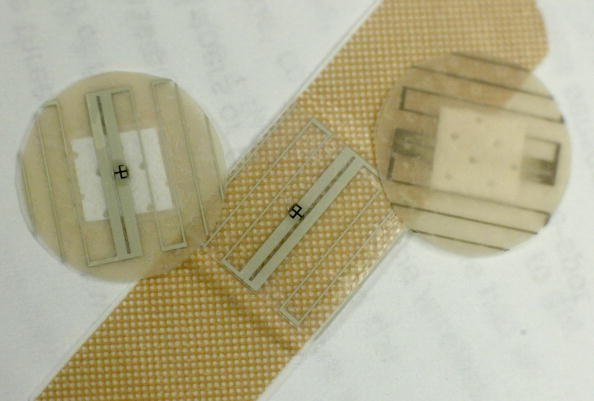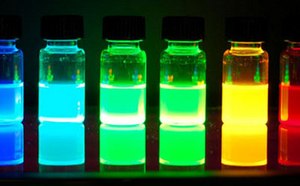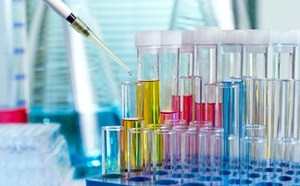Biosensors & Bioimaging

Biosensing and bioimaging facilitate the investigation of biological and pathological processes in living systems at the molecular level. A biosensor is a device used to detect the presence or concentration of a biological analyte, biological structure, or microorganism. Biosensors are found in bioelectronics, food and environmental monitoring, and biomedical applications to detect pathogens, food toxins, and biomarkers of diseases.
Biosensors have three main components: a recognition component that identifies the analyte and produces a signal, a signal transducer, and a reader to measure and quantify the signal received. Bioreceptors, such as antibodies, nucleotides, enzymes, or proteins, act as recognition molecules that bind or interact with a targeted analyte or biomarker. Signal transducers can function via many different physicochemical properties including electrical, electrochemical, optical, or magnetic outputs.
Bioimaging is an optical form of biosensing used to create non-invasive, visual representations of biological processes in cells, tissues, and anatomy for more accurate diagnosis and treatment of diseases.
Featured Categories
Our unsurpassed silicone material portfolio features a wide variety of molecular weights, chemical substituents...
Light up your research with our comprehensive portfolio of core-type, core-shell, and alloyed quantum dots in various compositions, sizes, functionalizations, and kits.
We offer an extensive range of natural and synthetic biomedical polymers with advanced properties suitable for all your biomedical applications.
We provide a broad portfolio of hydrophilic polymers grouped by chemical structure for biomedical, catalysis, self-assembly, and surface modification applications.
Diagnostic imaging modalities for in vivo applications include X-ray, computed tomography (CT), magnetic resonance imaging (MRI) and fMRI, and positron emission tomography (PET). In vitro applications often include super-resolution, two-photon fluorescence excitation microscopy, fluorescence recovery/redistribution after photobleaching (FRAP), and fluorescence resonance energy transfer (FRET) technologies.
For more information read our Material Matters™ issue dedicated to bioassays and bioimaging.
Visit our document search for data sheets, certificates and technical documentation.
Related Articles
- Professors summarize recent 2D materials synthesis advancements and biosensing applications in various fields.
- Graphene is the building block for carbon nanomaterials with different dimensionalities.
- Fluorescence quenching microscopy visualizes 2D materials like graphene and MoS2 rapidly, inexpensively, and with high fidelity.
- We presents an article concerning the applications of high-purity single-walled nanotubes in electronic and biomedical fields.
- Dextran polymer details: composed mainly of alpha-D-(1-6) linkages with varied branch lengths.
- See All (50)
Related Protocols
- Create durable hydrophilic PDMS surface appropriate for multiple printing applications using hydrophilic inks.
- See All (1)
Find More Articles and Protocols
How Can We Help
In case of any questions, please submit a customer support request
or talk to our customer service team:
Email custserv@sial.com
or call +1 (800) 244-1173
Additional Support
- Chromatogram Search
Use the Chromatogram Search to identify unknown compounds in your sample.
- Calculators & Apps
Web Toolbox - science research tools and resources for analytical chemistry, life science, chemical synthesis and materials science.
- Customer Support Request
Customer support including help with orders, products, accounts, and website technical issues.
- FAQ
Explore our Frequently Asked Questions for answers to commonly asked questions about our products and services.
To continue reading please sign in or create an account.
Don't Have An Account?


